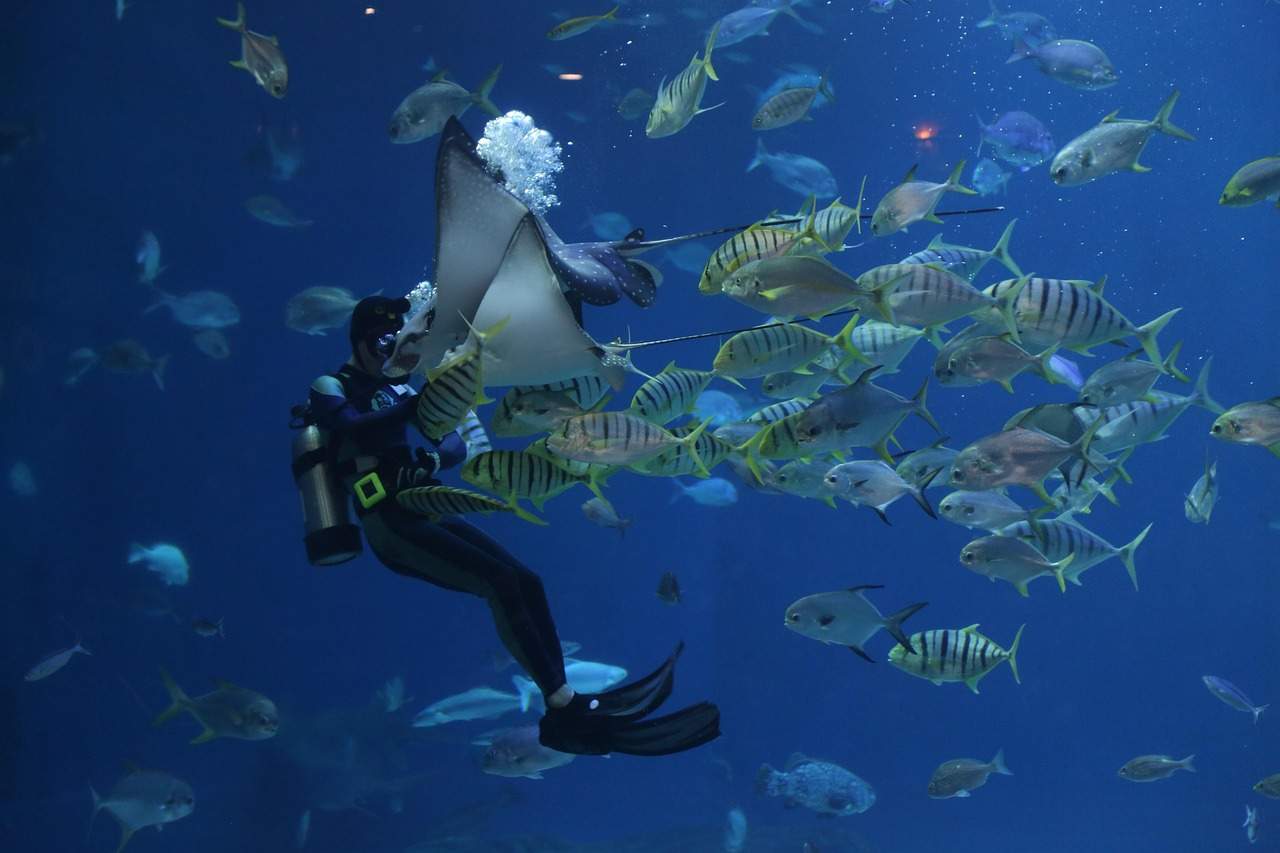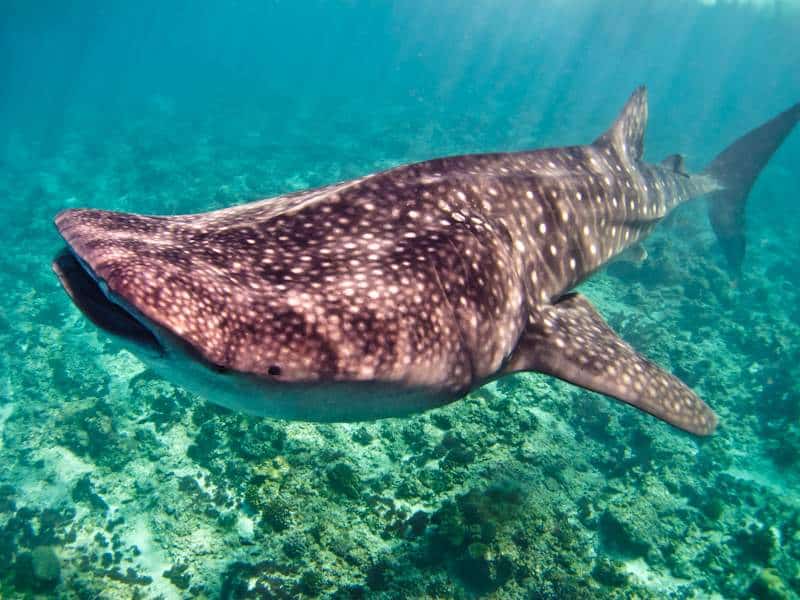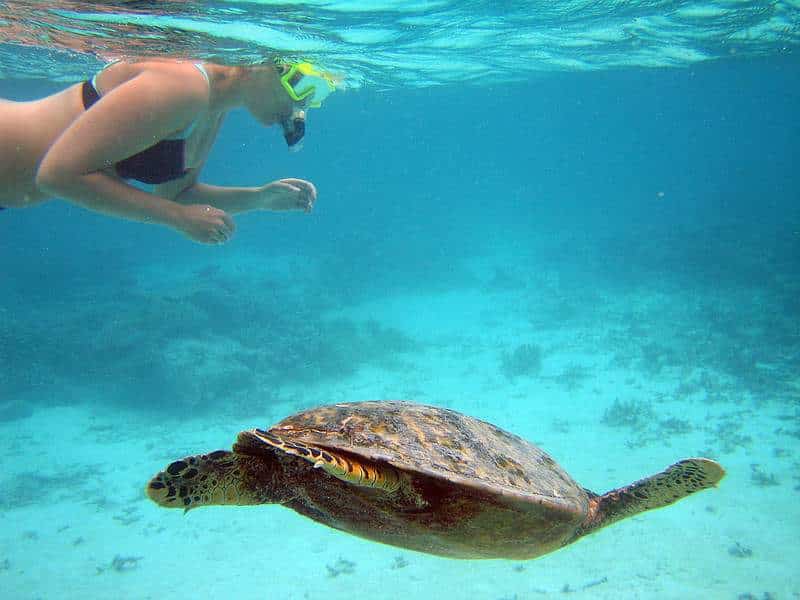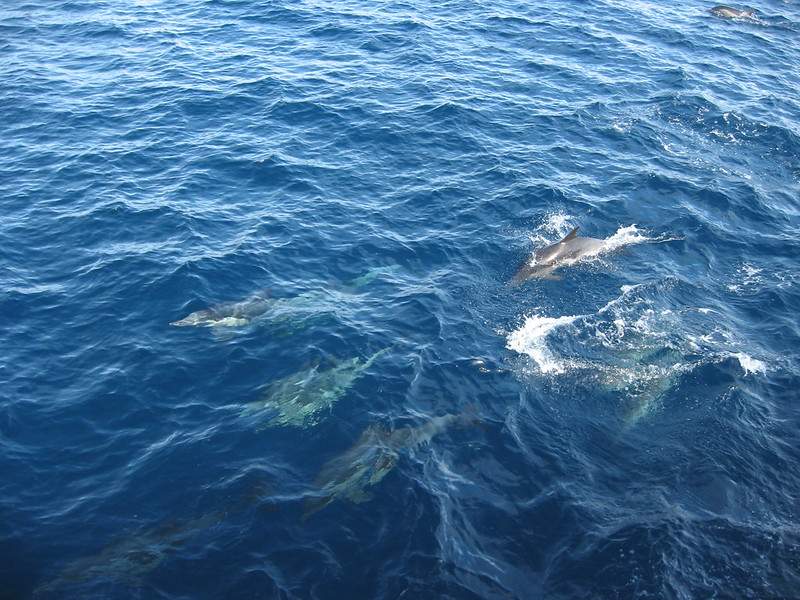Maldives Marine Life: Mantas, Whale Sharks, Turtles, Dolphins & More
The Maldives harbors one of the world’s most diverse and accessible marine ecosystems, where manta rays glide through feeding currents, whale sharks cruise shallow waters, and spinner dolphins perform acrobatic displays in crystal-clear lagoons. Understanding when, where, and how to encounter these magnificent creatures responsibly transforms a typical tropical vacation into a meaningful wildlife experience. This guide covers the key species, seasonal patterns, ethical viewing practices, and strategic base locations that maximize your marine encounters while respecting the delicate balance of Maldivian waters.
For comprehensive trip planning including flights, transfers, and accommodation strategies, start with the ultimate Maldives travel guide.
The Maldives Marine Ecosystem (Quick Primer)
The Maldives’ unique geography creates ideal conditions for marine life diversity through complex interactions between atolls, reefs, channels, and monsoon-driven plankton cycles. The archipelago sits atop an ancient underwater mountain range, forming 26 ring-shaped atolls separated by deep channels where nutrient-rich currents flow between the Indian Ocean and inner lagoons.
Monsoon patterns drive marine productivity through seasonal plankton blooms that feed everything from tiny reef fish to massive whale sharks. During the southwest monsoon (May-October), stronger currents and upwelling create plankton-rich waters that attract manta rays and whale sharks in spectacular numbers. The northeast monsoon (November-April) brings calmer conditions with excellent visibility, ideal for photography and nervous snorkelers.
Atolls function as natural marine sanctuaries, with shallow lagoons serving as nursery areas for juvenile fish and sharks, while outer reef slopes and channels provide feeding grounds for pelagic species. This ecosystem supports everything from microscopic plankton to apex predators, creating the biodiversity that makes Maldivian waters so exceptional.
Seasonal timing affects all marine encounters—see best time to visit the Maldives for detailed patterns.
Manta Rays
Behavior and hotspots: Manta rays follow seasonal plankton concentrations, with Hanifaru Bay in Baa Atoll hosting the world’s largest feeding aggregations. These gentle giants, reaching 7-meter wingspans, gather in shallow water (5-15 meters) to filter feed on concentrated plankton during southwest monsoon months (June-November).
Peak encounters occur July-October when up to 200 mantas congregate simultaneously, creating snorkeling experiences impossible to find elsewhere on Earth. Other reliable sites include cleaning stations throughout Ari, Baa, and North/South Malé Atolls where mantas visit for parasite removal by cleaner fish.
Snorkel vs dive etiquette requires maintaining 3-meter minimum distances, avoiding flash photography, and never touching or chasing these graceful creatures. Mantas are naturally curious and may approach closer on their own terms—patience rewards observers with incredible interactions.
Conservation status: Maldivian manta rays face threats from plastic pollution, habitat degradation, and tourism pressure, making responsible viewing practices essential for population survival.
Detailed encounter planning in swimming with manta rays and whale sharks in the Maldives. House reef access in snorkeling in the Maldives.
Whale Sharks
Primary zones: South Ari Atoll provides year-round whale shark encounters, with sites like Whale Shark Point and Dhigurah consistently producing sightings. These filter-feeding giants cruise shallow waters (5-30 meters) following plankton concentrations that shift with seasonal currents.
Best windows: While encounters occur throughout the year, August-November typically offers the most reliable sightings when plankton blooms intensify. Peak season can see 80-90% success rates on dedicated whale shark trips.
Responsible briefing essential: Current tourism practices often involve aggressive crowding and chasing that stresses these gentle giants. Ethical operators maintain 4-meter distances, limit group sizes to 8-10 snorkelers, and educate participants about appropriate behavior. The Code of Conduct specifies no touching, no flash photography, and no diving beneath the animals.
Population concerns: South Ari Atoll has experienced a 33% reduction in whale shark visits between 2014-2019, largely attributed to irresponsible tourism practices. Choosing operators that follow conservation guidelines helps protect these magnificent creatures.
Strategic base selection in best islands in the Maldives. Diving considerations in Maldives scuba diving.
Turtles
Species and distribution: The Maldives hosts healthy populations of green turtles and hawksbill turtles, with juveniles comprising the majority of sightings. Green turtles prefer seagrass meadows in shallow lagoons, while hawksbills frequent coral reef areas for sponge feeding.
Key locations: Laamu Atoll hosts 50% of green turtle sightings, while Kaafu (North Malé) supports 37% of hawksbill encounters. Nesting occurs on nine atolls, with significant beaches (20+ nests annually) in Baa, Kaafu, Laamu, and Thaa Atolls.
Seasonal patterns: Turtle sightings peak during dry season months (November-April) when 62-71% of encounters occur, though they remain visible year-round. Population studies suggest stable or increasing trends, indicating successful conservation efforts.
Nesting etiquette: Never disturb nesting females, avoid bright lights on beaches during nesting season, and maintain respectful distances during underwater encounters. Turtle-friendly house reefs provide regular sightings without requiring special excursions.
House reef turtle spotting guidance in snorkeling in the Maldives.
Sharks & Pelagics
Reef sharks dominate shallow coral environments, with blacktip and whitetip reef sharks commonly encountered on house reefs and lagoons. These generally harmless species provide exciting but safe encounters for snorkelers and beginning divers.
Grey reef sharks concentrate around channels (kandus) and outer reef slopes where strong currents bring prey fish. Sites like Fotteyo Kandu in Vaavu Atoll offer spectacular schooling encounters but require advanced diving skills due to challenging conditions.
Nurse sharks frequent sandy areas and coral overhangs, often resting during daylight hours. Their docile nature makes them excellent subjects for underwater photography, though maintaining respectful distances remains essential.
Far-south specialties in Fuvahmulah and Addu Atolls include tiger sharks and scalloped hammerheads, representing some of the Maldives’ most challenging and rewarding pelagic encounters. These expeditions require advanced diving certification and significant logistical planning.
Conservation success: The Maldives banned all shark fishing in 2010, creating one of the world’s largest shark sanctuaries and supporting population recovery.
Dolphins & Other Favorites
Spinner dolphins represent the most commonly encountered cetacean species, typically observed in pods of 40-100 individuals performing acrobatic displays including their signature spinning jumps. High site fidelity means consistent sighting opportunities, with 85% success rates reported in prime locations.
Bottlenose dolphins appear in smaller groups, recognizable by their larger size and lack of spinning behavior. Risso’s dolphins occasionally appear but remain much rarer than their smaller cousins.
Best viewing times: Late afternoon sessions (3:30-5:00 PM) offer optimal sighting conditions as dolphins become more active during feeding periods. Dry season months (November-April) provide calmer seas and better visibility for photography.
Other marine favorites include eagle rays gliding over sandy flats, massive Napoleon wrasse patrolling cleaning stations, elusive octopi hunting at night, and moray eels emerging from coral crevices. These encounters happen regularly on quality house reefs and during dedicated snorkel excursions.
Ethical viewing maintains 50-meter boat distances, limits observation time to 30 minutes, and avoids chasing or surrounding dolphin pods. Swimming encounters should only occur when dolphins approach voluntarily.
Dolphin cruise planning in things to do in the Maldives.
Where to Base Yourself for Wildlife
- South Ari Atoll excels for whale shark encounters with year-round reliability and multiple access points including Dhigurah, Maamigili, and various resort islands. The protected marine area status ensures healthy populations and regulated tourism practices.
- Baa Atoll provides unmatched manta ray encounters, particularly around Hanifaru Bay during feeding season (June-November). UNESCO Biosphere Reserve designation supports conservation while maintaining tourism access through permit systems.
- Ari/Vaavu Channels offer the best shark diving with strong currents attracting grey reef sharks, eagle rays, and occasional pelagics. These sites require advanced diving skills but reward experienced underwater enthusiasts with spectacular encounters.
- North/South Malé Atolls deliver convenient access to diverse marine life through excellent house reefs and short boat trips to renowned sites like Fish Head and Banana Reef. The proximity to Velana International Airport makes these ideal for shorter trips focused on marine experiences.
Strategic considerations: Wildlife-focused travelers should choose accommodation based on target species and seasonal timing. Manta enthusiasts need Baa Atoll access during southwest monsoon. Whale shark seekers benefit from South Ari bases. Diverse marine life experiences work best from central locations with good boat access.
Island selection strategies in best islands in the Maldives. Accommodation options in where to stay in the Maldives.
Conservation, Codes & Citizen Science
- Hanifaru Bay regulations strictly control visitor numbers (45 people maximum), limit stay duration (45 minutes), and prohibit scuba diving to protect manta feeding behavior. Permits cost $20-30 per person and require advance booking during peak season.
- Universal guidelines apply throughout Maldivian waters: maintain minimum distances (3-4 meters from large marine life), avoid touching or feeding any species, use reef-safe sunscreen only, and never stand on coral reefs. Flash photography underwater is prohibited for manta rays and whale sharks.
- Buoyancy control becomes critical for reef protection—poor diving skills cause more environmental damage than any other tourist activity. Practice neutral buoyancy before attempting marine life photography or close approaches to sensitive species.
- Citizen science opportunities allow visitors to contribute meaningful data through photo identification projects for mantas, whale sharks, and dolphins. Organizations like Marine Savers, Manta Trust, and the Maldives Whale Shark Research Program welcome tourist-contributed photographs and sighting reports.
Conservation support includes choosing operators that contribute to research, respecting protected area regulations, and avoiding businesses that practice harmful activities like shark feeding or turtle riding.
Photography Tips (Without Stressing Wildlife)
- Approach techniques emphasize patience over aggression—position yourself along the animal’s travel path rather than chasing or intercepting. Move slowly and deliberately, allowing marine life to approach voluntarily rather than forcing encounters.
- Natural light strategies work best underwater, as flash photography can startle sensitive species like manta rays and disrupt feeding behavior. Surface-lit shots during midday hours provide the best color saturation and detail without artificial illumination.
- Composition principles include staying low to capture upward angles that showcase marine life against blue water backgrounds. Wide-angle lenses capture environmental context while telephoto options allow respectful distances for larger species.
- Ethical considerations mean never manipulating animal behavior, positioning, or feeding patterns for better shots. The best wildlife images result from understanding natural behavior and anticipating moments rather than forcing situations.
Equipment essentials include reef-safe housings, neutral buoyancy practice before photography attempts, and backup equipment for extended trips. Action cameras work well for beginners, while serious photographers benefit from dedicated underwater housings and strobes.
Camera gear guidance in what to pack for a Maldives trip.
FAQs
Can I see mantas in December?
December falls outside peak manta season, but cleaning station encounters remain possible year-round. For reliable aggregation experiences, visit June-November during plankton blooms.
Where are whale sharks most reliable?
South Ari Atoll sites like Whale Shark Point offer the most consistent encounters, with 80-90% success rates during peak season (August-November). Choose operators following ethical guidelines for best experiences.
Is it safe to snorkel with reef sharks?
Absolutely—reef sharks are generally harmless to humans and tend to avoid rather than approach snorkelers. Maintain respectful distances and avoid sudden movements.
Conclusion
Maldivian marine life represents one of Earth’s most accessible and diverse underwater ecosystems, where massive filter feeders, graceful rays, and playful dolphins thrive in crystal-clear tropical waters. Success lies in matching your timing, location, and expectations with seasonal patterns and conservation guidelines that protect these magnificent creatures for future generations.
The key insight? Responsible wildlife encounters often provide more meaningful experiences than aggressive tourist approaches. Patient observers who respect minimum distances, avoid flash photography, and choose ethical operators consistently report more intimate and longer-lasting encounters. Marine life that feels safe and unstressed tends to exhibit natural behaviors, creating the magical moments that make Maldivian waters unforgettable.
Choose your base strategically—South Ari for whale sharks, Baa Atoll for mantas, central atolls for diversity. Plan timing around species and seasonal windows. Most importantly, remember that you’re visiting the home of wild animals who deserve respect, space, and protection from tourism pressure. Your responsible choices help ensure that future visitors can experience the same underwater magic.
For comprehensive trip planning covering all aspects of Maldives travel, return to the ultimate Maldives travel guide.







